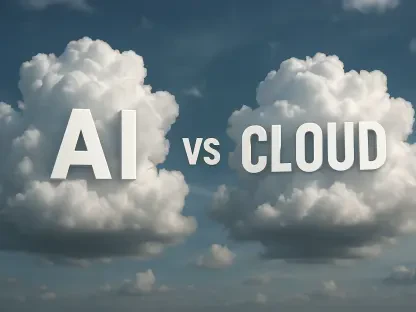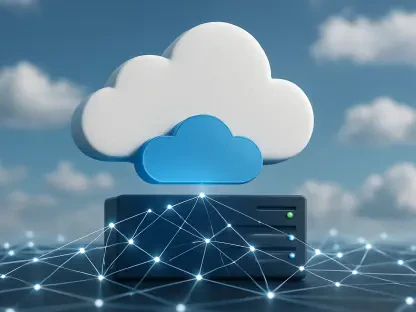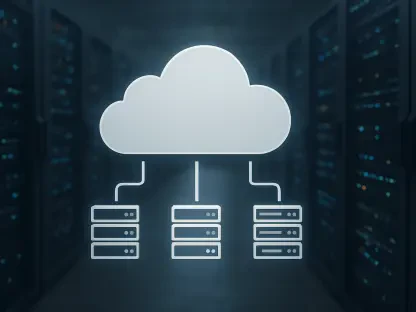The landscape of Microsoft’s AI Cloud Partner Program is set to shift dramatically come January 2025. With the addition of over 20 new license options and the phasing out of beloved legacy benefits like the Action Pack, this transformation has sparked a mixed reaction among partners. This article will delve into the specifics of these changes, explore the motivations behind them, and weigh the potential benefits versus the drawbacks.
The Significant Shift: New Product Licenses
Microsoft’s January 2025 update will introduce over 20 new license options to its AI Cloud Partner Program. This includes cutting-edge offerings like Copilot products, Defender for Endpoint, and GitHub. Julie Sanford, Microsoft’s vice president of partner go-to-market, programs, and operations, emphasizes that these new additions are poised to empower partners with the latest technologies to propel business growth. The infusion of these licenses aims to ensure that partners are not just keeping pace with industry trends but are at the forefront of cloud and AI innovation.
The inclusion of Copilot products, for instance, leverages AI to assist users in creating code, solving problems, and gaining deeper insights into their data. Defender for Endpoint and GitHub will further enhance security and development capabilities, respectively. Sanford notes that the new packages will continually evolve, implying that partners who invest in these packages today will benefit from ongoing updates and improvements. It’s a move designed to keep partners agile and competitive in a rapidly changing technological landscape.
Sanford also elaborated on the specifics of these changes, pointing out that the silver and gold benefits will remain effective for one year after their last purchase or renewal but will not be updated in January 2025. Thus, partners are urged to purchase a partner benefits package now to gain access to the fresh benefits whenever they become available. Microsoft’s push towards advanced AI and cloud functionalities highlights a clear intention to lead in these high-growth areas. By revamping the offerings in this way, the company aims to align its partners more closely with future market demands.
Farewell to Action Packs and Legacy Benefits
One of the most contentious changes is the phasing out of the Action Pack, Learning Action Pack, and legacy silver and gold benefits. These will be officially discontinued on January 22, 2025. Microsoft urges partners to purchase or renew these legacy packages before the cutoff date to extend their use for an additional year. This change marks a significant departure from a long-standing tradition within Microsoft’s ecosystem. Action Packs have historically provided smaller partners with affordable access to essential Microsoft software and training. Their removal has prompted some outcry, particularly from partners who have relied on these benefits for years.
Despite the pushback, the rationale for this move seems aligned with Microsoft’s aim of streamlining and modernizing its partner benefits. The phase-out provides a transition window, allowing partners to adjust and explore the new packages tailored to align better with cloud and AI-centric future goals. Julie Sanford encourages partners to explore the new benefits and select a partner benefits package to access the new privileges as soon as they are released in January 2025. She notes that these changes are designed to offer more choice and value to partners, empowering them to leverage the latest Microsoft products.
Sanford highlights that while the transition might cause some initial discomfort, it’s an essential step towards a more robust and future-proof partnership framework. The decision to eliminate older programs reflects a strategic pivot towards areas where Microsoft sees the most growth potential. This approach aims to not only streamline the array of offerings but also to focus on tools and services that will offer the most value in the rapidly evolving tech landscape. It’s a forward-thinking strategy but one that necessitates some level of adaptation from existing partners.
Exploring the New Packages
To replace the legacy benefits, Microsoft is rolling out three new packages: Partner Success Core Benefits, Partner Success Expanded Benefits, and Solutions Partner designation. Each package is designed to enhance cloud and AI capabilities while driving long-term profitability for partners. For smaller outfits and cloud-only operations, the Partner Success Core Benefits package offers a cost-effective entry point. It emphasizes cloud functionalities that align with the current market focus on digital transformation and AI integration.
The Partner Success Expanded Benefits package is suited for those transitioning from legacy silver or gold benefits. It promises to elevate a partner’s offerings with more comprehensive resources and tools, aiming to help scale operations and enhance customer satisfaction. For those aiming for a robust marketplace presence, attaining a Solutions Partner designation is strongly recommended. Microsoft offers three new packages for partners to consider: Partner Success Core Benefits, Partner Success Expanded Benefits, and a Solutions Partner designation. Each package is tailored to enhance cloud and AI capabilities and drive long-term profitability.
Microsoft’s major goal with these changes is to equip partners with practical experience that will aid in scaling their businesses. Sanford emphasizes that the new partner benefits packages will continue to evolve, and acquiring a package ensures access to updated benefits upon each renewal. She also highlights that these packages are cost-effective, offering value greater than their retail price. For partners currently utilizing an Action Pack or Learning Action Pack, the recommendation is to consider the Partner Success Core Benefits or Partner Success Expanded Benefits packages based on their organization’s size and needs.
Partners with legacy silver or gold benefits are advised to transition to the Partner Success Expanded Benefits package while also aiming for a Solutions Partner designation to elevate their marketplace presence.
Benefits and Drawbacks: Partner Reactions
Reaction among Microsoft partners has been mixed. While some express disappointment due to the discontinuation of the Action Pack and other legacy benefits, others see potential in the new offerings. On forums like Reddit, users like Rockitnick recall past instances when community pushback led Microsoft to reinstate popular benefits. On the flip side, partners like tc982 and MDL1983 see value in the new packages, noting their cost efficiency and alignment with current market needs, especially for cloud-centric and smaller operations.
These partners argue that the updated offerings provide more value than the legacy packages, making the transition an opportunity rather than a setback. The reaction from Microsoft AI Cloud partners is mixed, with some expressing disappointment and others seeing potential in the new offerings. Reddit user Rockitnick reflects on a similar situation from a few years ago when the community’s discontent led Microsoft to reinstate the benefits. User fp4 points out that the Action Pack had been diminishing in value over the years, leading to less surprise at its discontinuation.
However, other partners see benefits in the new direction. User tc982 and MDL1983 acknowledge that even though on-premise licenses are being phased out unless partners have a solutions designation, the new packages are more valuable and cost-efficient, especially for smaller shops and cloud-only operations. These users believe the new benefits align better with current market needs.
Strategic Vision: The Bigger Picture
Microsoft’s overhaul of its AI Cloud Partner Program aligns with its broader strategy to dominate both AI and cloud markets. This move complements its partnership with OpenAI and its competition with Amazon Web Services via Azure. CEO Satya Nadella has been vocal about the interconnectedness of AI and cloud services, emphasizing that winning enterprise workloads for Azure is crucial. Integrating AI capabilities into its SaaS platforms positions Microsoft as a formidable player in both domains.
The end game is clear: by equipping partners with the latest tools and practical experience, Microsoft is not just facilitating business growth but also cementing its place at the cutting edge of technology. This strategic shift ensures that partners are not only beneficiaries of advanced technologies but also contributors to a larger ecosystem of innovation. Microsoft’s broader strategy is to drive the adoption of AI and cloud solutions among its partners. This move is in line with the company’s recent foray into generative AI, marked by its partnership with OpenAI and efforts to compete with Amazon Web Services in public cloud computing through Azure.
By integrating AI capabilities into its SaaS platforms, Microsoft aims to secure a dominant position in both AI and cloud industries. CEO Satya Nadella has underscored this vision, highlighting the interconnectedness of AI and cloud services during the company’s earnings call. He notes that Azure AI usage often coincides with data services, pointing to the importance of winning enterprise workloads for Azure, which reflects Microsoft’s ambition to strengthen its AI and cloud proposition.
Looking Ahead
The landscape of Microsoft’s AI Cloud Partner Program is set for a seismic shift in January 2025. This upcoming transformation features the introduction of over 20 new licensing options while simultaneously phasing out cherished legacy benefits such as the Action Pack. Reactions from partners have been mixed, with some eagerly anticipating the new opportunities and others mourning the loss of familiar perks. This significant overhaul aims to modernize and improve the program, although it has stirred a variety of emotions among stakeholders. The article ahead will examine the detailed specifics of these impending changes, delve into the motivations driving Microsoft’s decisions, and analyze the anticipated benefits while also considering the potential drawbacks. By understanding both the positive aspects and the concerns, partners can better prepare for this transition and make informed decisions on how to navigate the updated framework.









